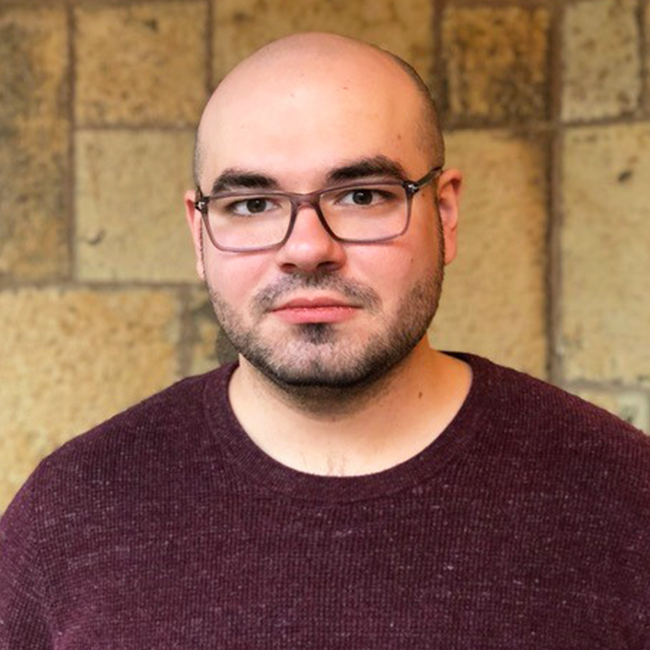I spoke with Dr. Alex Shpenev, a Senior Data Research Scientist at the Center for Social Norms and Behavioral Dynamics. He also teaches Statistics and Data Science for the Master of Behavioral & Decision Sciences students at the University of Pennsylvania. His work focuses on the social nature of health behavior. He currently spends most of his time working with the Center on understanding the social patterns of latrine use in India.
Tell me about your research interests and how you made your way to the Center?
I got my Ph.D. in demography and sociology. Throughout grad school, I was interested in how social structures, specifically family structures, affect people’s behavior. I explored how education and marriage affect longevity. For instance, it is well-known that people with higher education and married individuals live longer. However, we can safely say that knowing how to solve quadratic equations and obtaining marriage certificates don’t increase lifespan on their own!
However, we can safely say that knowing how to solve quadratic equations and obtaining marriage certificates don’t increase lifespan on their own!
I was interested in learning about factors that explain why marriage and education affect longevity. For example, a possible reason is that people with higher education are more aware of healthy behaviors or live in proximity to health facilities. Similarly, being married to someone with health insurance improves your chances of survival. I also find it interesting that people are more likely now than even several decades ago to marry people of similar educational backgrounds, and this can be one of the reasons why the role of education appears to increase over time. During my Ph.D., I loved exploring how interactions between people
affected their livelihood and how the behavior of individuals is interdependent. At the time, my Ph.D. supervisor was working with Professor Cristina Bicchieri (Director of the CSNBD) on this sanitation project in India and they needed someone to do network analysis, and that became the project I saw through for the next five years!
What got you interested in this project?
India is the world’s second most populated country and is developing rapidly. Every time I travel to India, I see tremendous change and it’s an exciting place to conduct research. However, despite all the improvements, there is still limited access to sanitation and toilets. Open defecation (OD) is a common practice in some parts and has strong detrimental effects, especially on the health of infants and children through foodborne diseases. What’s interesting is that OD has been successfully reduced or even eliminated in other countries, even those that are less developed than India, which is a paradox.
What’s interesting is that OD has been successfully reduced or even eliminated in other countries, even those that are less developed than India, which is a paradox.
The government is very motivated to solve the problem. Therefore, it’s not a neglected problem nor is there a paucity of solutions. It’s just that for some reason, methods that work in other geographies don’t seem to work in India and we wanted to find out why. One hypothesis is that although local governments try to specialize solutions, the sociocultural barriers to toilet adoption are particularly strong in India, as the country encompasses culturally diverse regions with a multiethnic and multilingual population.
How was your approach different?
We realized quickly that people’s behavior and health are immensely affected by what they believe other people around them are doing. This is the approach Cristina takes to problems, focusing on the interdependency of behavior. The existing campaigns were trying to change individual behavior through various mechanisms, including shaming people for defecating in the open. However, we realized that people weren’t sensitive to shaming and that their sanitation behavior depended far more on how their reference network, such as their friends, behaved.
This is the approach Cristina takes to problems, focusing on the interdependency of behavior.
What finding of the study did you find most interesting?

I think the fact that people were trying to do what other people did – a form of social learning. In these areas, the community’s actions were important. For instance, a mobile phone is a visible symbol of status and, even in resource-constrained areas, most households had a mobile phone but they didn’t have a toilet. This held true for TVs as well. I was intrigued by the role collective behavior played in OD.
Can you tell me about a challenge you faced during this project?
It’s easy to be an outsider in India given how diverse it is. This held true even for our researchers who were from there. Even when we got into the weeds and learned about the context there were still layers to uncover. An example of something that caught us off-guard was when we were conducting research in India at the same time as when the Citizenship Amendment Act was released. This was a controversial act that created significant unrest in some parts of the country. We weren’t aware of this act but since some of our field researchers were from the capital of India, the participants believed we were collecting information for the government and were afraid to speak freely. We even got chased out of a village once! Therefore, establishing trust with people was one of our most significant challenges. We had to demonstrate to participants that we had good intentions.
Establishing trust with people was one of our most significant challenges. We had to demonstrate to participants that we had good intentions.
So how did you tackle this issue of establishing trust?
One technique we used was involving the local community and their leaders to a large extent. They relayed the message that we were there to help. Second, COVID significantly disrupted our work because research agencies were then unable to work with communities, leaving people feeling abandoned. Therefore, we had an initiative where we coordinated forces with the local leaders and helped distribute food and resources to community members to show them through action that we genuinely care.
What keeps you going with this project?
Our work can potentially change the lives of people and I think that’s one of the coolest things you can do as a researcher. Seeing the impact of my work keeps me going and it’s wonderful to see that your research helped someone live a better life.
Any famous last words?
Working in development is one of the most rewarding careers ever.
You can read more about Dr. Alex Shpenev’s research here
About the Author
Isha Jain is a graduate student in the Master of Behavioral & Decision Sciences Program at the University of Pennsylvania. She is the Content Officer for the Center for Social Norms and Behavioral Dynamics. You can reach her via LinkedIn and view the rest of her writing here



